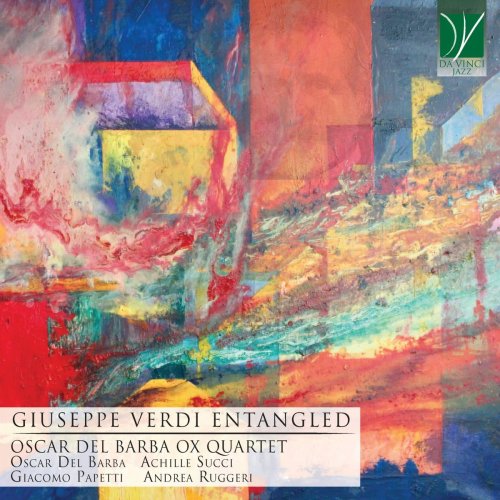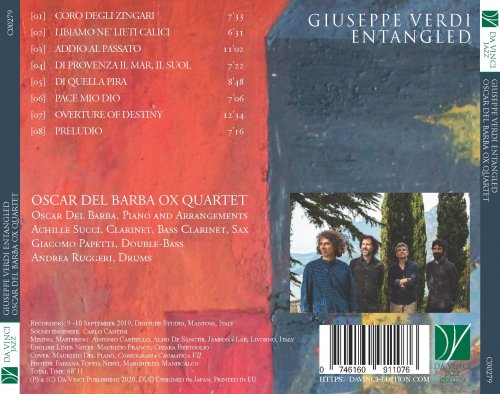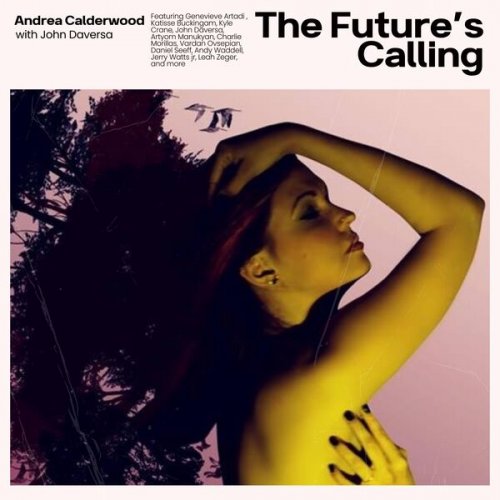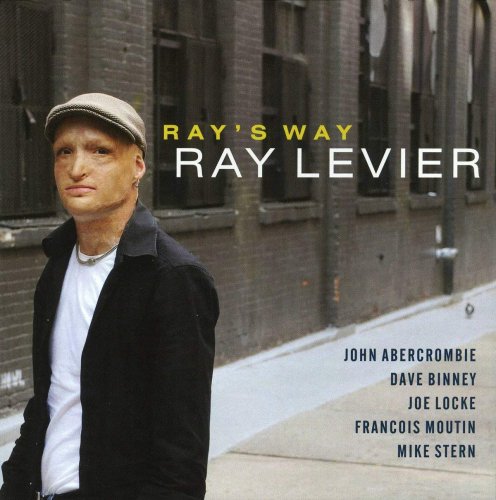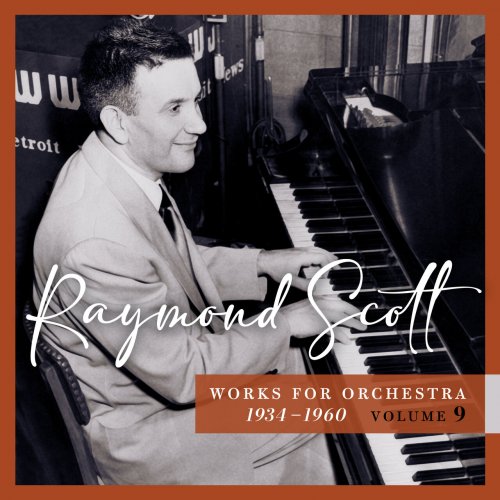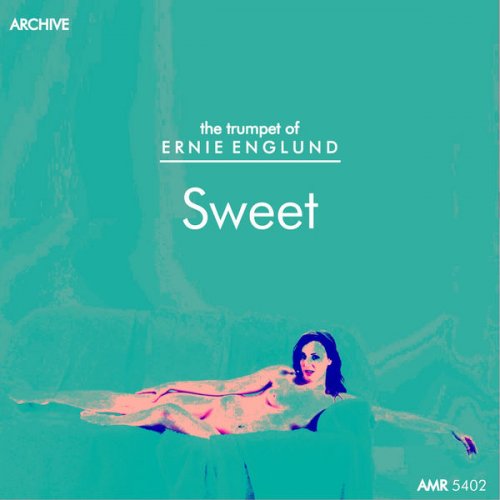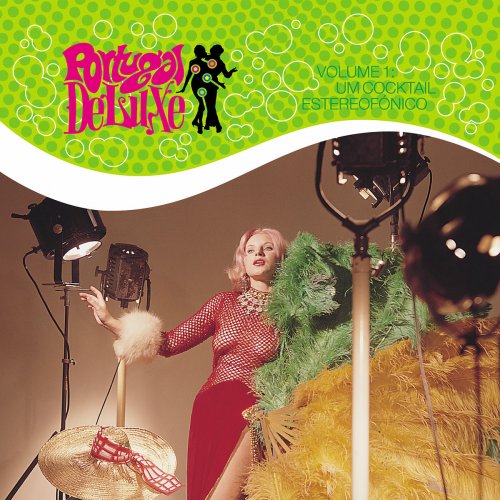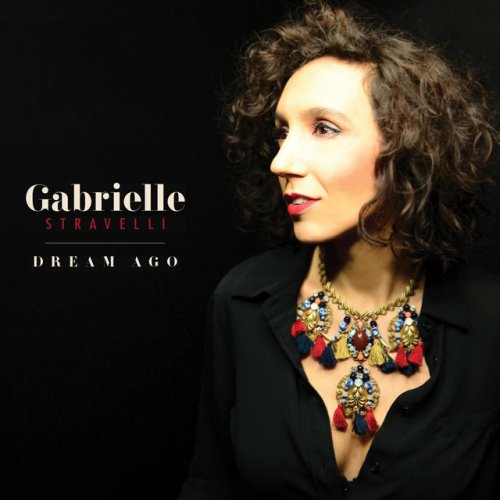01. Coro degli zingari
02. Libiamo ne' lieti calici
03. Addio al passato
04. Di provenza il mar, il suol
05. Di quella pira
06. Pace mio Dio
07. Brano tratto da ouverture
08. Preludio
To give different interpretations, under the viewpoint of jazz, of works from the Western classical repertoire through original projects, is a task in line with what, historically, has been a constant within the itinerary of music of an Afro-American derivation. Through time, the best among the innumerable rewritings have not merely (and trivially) arranged or played in a “jazzy” style numerous works of the European tradition, but rather have recreated them in a different context, basically giving them a new life. The era of swing was a particularly fecund period for this kind of operations, both as regards the orchestral panorama, and for the solo and ensemble music; but also in the following decades, up to present day, the views on the European music from a cultivated tradition multiplied, focussing on Mozart, Wagner, Čajkovskij, Grieg, Liszt, Dvořák, Massenet, Mussorgskij, Satie, Gershwin, Bernstein, Stravinsky, Bach and many others, among whom, obviously, Giuseppe Verdi. Thanks to the pen of innumerable jazz players, better or lesser known, among whom Uri Caine, Duke Ellington and Billy Strayhorn (to name but three of those who are most relevant also as concerns quantity), many “classical” works have been entirely decontextualized, becoming something entirely new. This is what happens with this CD, inspired by thematic materials and airs excerpted from some of the most famous operas by Giuseppe Verdi, transformed by pianist and composer Oscar Del Barba in light of his sensitivity. Also in this case, thus, it is not a jazz arrangement of Verdi’s themes (as, to be sure, has happened in the past), but rather a visionary operation, whereby the Maestro from Busseto inspires works where the multifaceted languages of contemporary jazz are found, together with a compositional concept indebted to Frank Zappa’s multifaceted world, in an entirely unconventional meeting happening on a razor’s edge. The choice of the arias, moreover, fell on extremely popular themes, which therefore are extremely difficult to reinterpret in a different dimension from that originating them, thus making this project all the more interesting.
Maurizio Franco
At first sight, one might be tempted to say that there are hardly two musical genres more different from each other than Italian opera and jazz. The quintessence of Italian opera is melody, sometimes to the detriment of rhythm and of the daring explorations of harmony, which are two among the most fundamental components of jazz. However, this simplistic view needs to be qualified, and an album such as this may helpfully dispel some myths: by underpinning the potential of Verdi’s music for jazz interpretations, it highlights the hidden qualities of his use of harmony and rhythm, which may get unnoticed under the fascination of his unforgettable melodies.
The choice to open this album with a reinterpretation of the “Coro degli zingari” from Trovatore is a particularly apt one. Verdi used the comparative exoticism of gypsy music, seen through the lenses of the Italian musical language, and the unusual rhythmical drive of the anvils’ percussion, in order to create a cross-cultural piece capable of conquering his audiences with the intersection between the unfamiliar (and therefore enticing) and the familiar (and therefore reassuring). This is a process similar in kind to that originating jazz itself, an encounter with “the Other”, and a hybridisation of musical languages of a varied provenance. Moreover, the (literally) hammering beat of Verdi’s original lends itself to a modern reinterpretation, which begins by adopting it in its obsessive form, and later transforms it into a freer concept.
The equally famous scene of the toast in Traviata is shrewdly reinterpreted. Fascinatingly, the jazz arrangement begins equivocally: while Verdi’s original immediately states the cheerful mood, the tonal range, the bouncing rhythm setting the scene’s mood, here we have indeterminate sound and harmony, and virtually no rhythmically recognizable beat. Only gradually, with the emergence of the theme, the brilliant and cheerful atmosphere starts to appear, and – fascinatingly – the closer the arrangement gets to the spirit of the original, the farther it goes from its superficially recognizable features; the result is as sparkling and lively as the original, but in a very refreshing perspective.
Similarly, Violetta’s heartrending “farewell to the past”, the moment when the heroine of Traviata renounces her dreams and accepts her fate, is perceptively recreated. The initial prelude, in the solitary utterance of the sax, seems to parallel the unspeakable loneliness of a young woman whose illness plunges her from a context of shallow brilliancy to suffering and death. The piano’s interventions, with the eerie “wrong” octaves, which successfully reproduce the idea of an out-of-tune piano, contribute to this feeling of looming doom. Later, as the piece finds its rhythmic shape with an ostinato, the atmosphere changes slightly, but without abandoning the overall mood.
Just as Germont reminds his son of the “sea and sun” of his birthplace, Provence, Verdi’s famous theme is reduced to a memory, a topography of the feelings where not everything is present, and just a shadow of what has been resurfaces. The dialogue between two generations is also evoked by the interaction of the instruments, transmitting to each other the beautiful tune of Verdi’s original, in an increasing density of feeling.
The fiery nature of the stake where the witch of Trovatore will be burnt is suggested by the quicksilver chains of notes lighted by the performers in “Di quella pira”: the jazz arrangements manages to convey the heroic and bold attitude of the young protagonist, while also looking in a slightly ironic perspective to his boasting. The central section, with the violent clash of rhythms and harmonies, seems to convey the terrifying and yet fascinating seduction of a burning fire.
The positive character of Leonora and her devout prayers are efficaciously evoked in the arrangement of “Pace, pace mio Dio!”, where a kind of childlike innocence pervades the jazz version, both in the sounds chosen for symbolising her musically, and in the purposefully simple harmonizations at the beginning. The conclusion, after the thickening texture of the middle section, seems once more to recover the enchanted purity expressed in this version.
The beautiful musical structure of the jazz arrangement of the “Overture” from one of the darkest and most anguishing operas by Verdi is revealed by the skilful juxtaposition of its sections. Here too, the overall perspective closely mirrors that of the original, with the feeling of an impending doom which seems to condemn inescapably those under it, and which is conveyed by the dense and tense scoring of this piece. Similarly, the desolate opening the jazz version of the “Preludio” from Traviata tells the hearer about the sad destiny of Violetta from the outset, though, as in Verdi’s original, more cheerful moments are not missing, and it is precisely by virtue of this clash that the drama emerges at its most powerful.
Through jazz, therefore, we discover aspects of Verdi’s music which we might have overlooked; as happens to all masterpieces, they stand, or rather enjoy, manipulation, and through it we see “new” facets of well-known works.
Notes by Chiara Bertoglio
